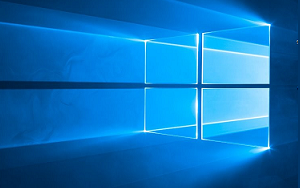Running out of space on your iPhone can be frustrating, but with some strategic steps, you can free up space quickly. This guide explores practical and effective methods to increase storage capacity on your device.
Introduction
In today's digital age, our smartphones are not just communication devices; they're our cameras, personal organizers, and entertainment centers. However, with great functionality comes the challenge of managing storage space. If you're consistently running out of space on your iPhone, you're not alone. This guide will help you free up space efficiently, allowing you to maximize the utility of your device.
1. Analyze Your Storage
Before you start deleting files, it's essential to understand what's consuming your storage. Here's how you can check your iPhone's storage:
- Go to Settings.
- Tap on General.
- Select iPhone Storage.
- Review the graph and list of apps to see what's taking up space.
This breakdown will help you identify which apps or data types are the primary culprits.
2. Manage Your Apps
Apps can take up significant space, especially those that store data locally. Consider the following steps:
- Offload Unused Apps: This feature removes the app from your device but keeps its data. You can reinstall the app without losing information.
- Go to Settings > General > iPhone Storage.
- Find the app you want to offload.
- Tap Offload App.
- Delete Apps You No Longer Use: Uninstall apps you haven't used in months.
3. Optimize Photos and Videos
Photos and videos are notorious for consuming storage. Here's how to manage them:
- Enable iCloud Photos: Store your photos in the cloud, freeing up local space.
- Go to Settings > Your Name > iCloud > Photos.
- Toggle on iCloud Photos.
- Optimize iPhone Storage: Keep smaller, space-saving versions of your photos on your device.
- In the Photos settings, select Optimize iPhone Storage.
- Delete Duplicates and Screenshots: Regularly clean out unnecessary or duplicate photos.
4. Clear Safari Cache
Over time, Safari can accumulate a lot of cached data. Clear it by following these steps:
- Open Settings.
- Scroll down and tap Safari.
- Select Clear History and Website Data.
5. Manage Messages
Text messages and their attachments can add up. Consider these tips:
- Auto-Delete Old Messages: Set your messages to automatically delete after a period.
- Go to Settings > Messages.
- Under Message History, select Keep Messages and choose a timeframe.
- Delete Large Attachments: Manually review and delete large attachments from message threads.
6. Review Downloads and Files
Check your Files app for old downloads and documents you no longer need:
- Open the Files app.
- Navigate to the Downloads folder.
- Delete files that are no longer necessary.
7. Use Streaming Services
Consider using streaming services for music and videos instead of downloading them. Services like Apple Music, Spotify, and Netflix offer offline options while reducing local storage needs.
8. Update iOS
Ensure your device is running the latest version of iOS. Apple often includes storage optimization features in updates:
- Go to Settings > General > Software Update.
- If an update is available, tap Download and Install.
Conclusion
Freeing up space on your iPhone can greatly enhance your device's performance and usability. By regularly managing your storage and utilizing the tips in this guide, you can ensure that your iPhone remains a powerful, efficient tool. Remember to periodically review your storage habits and adjust as necessary to avoid running out of space in the future.







